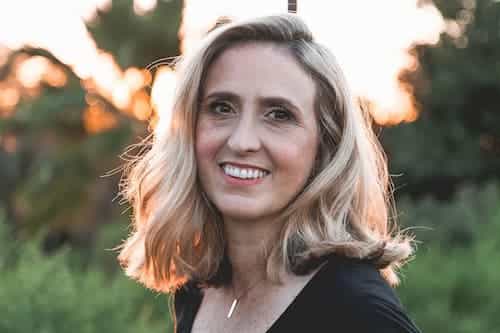“I dream of the day my nieces and nephews visit me in Utah and we all ski together.”
In early 2017, Shannon Syrstad tore her ACL after a fall while backcountry skiing, and subsequently had to have surgery. After choosing the “gold-standard” patellar tendon autograft for her reconstructed ACL, she was left with debilitating knee pain.
“Knee pain with this type of graft is fairly common, I just didn’t think it would be so inhibiting and intense. I also developed Patellofemoral Pain Syndrome after rehab was derailed. I had a bit of a double whammy with anterior knee pain: both harvested site morbidity and PFPS. My original medical team was quite perplexed at my pain (they never mentioned PFPS or harvest site morbidity). They prescribed resting for several months and stopping rehab altogether.
During my first year after ACL surgery, I was greatly limited by pain, atrophy and lack of rehab – that was a very rough year”
Around 1 year after Shannon’s ACL surgery, she found her revolutionary fifth physio and her first remote, telemedicine experience! “She got me on a progressive strengthening plan (aka proximal muscle rehabilitation) for PFPS and ACL rehab. She also taught me a great deal about pain science and tissue adaptation. Not only was I weak, but my tissues had maladapted so much that walking and daily life activities were painful or lead to flare ups with simple tasks.”
A progressive strengthening plan made all the difference for Shannon. Just 5 months into this rehab plan, Shannon was able to reintroduce mountain biking. “It was not pain free. I had to start on a very fresh knee. However, I built upon that month after month. After 10 months of the new rehab plan, I was able to complete a 2.5 day, 80 mile/129km mountain bike tour! This took a lot of building. There were plenty of flare ups along the journey as I repeatedly tested my tissue’s tolerance. It’s quite amazing to think 10 months prior and after a year of atrophy, that 5 minutes on a stationary bike would have flared me up for days. Now I was doing long distances and consecutive biking days in a row!
My PFPS has improved greatly thanks to much needed strength throughout my hips, glutes, quads and calves using weights and exercises that challenged me, understanding pain better, and gradual exposure to activities.
At the beginning of my second year of rehab, I applied similar principles of graded exposure to hiking. Previously, hiking did not feel great due to the patellar tendon harvest site area. There was still lots of adapting left. At the end of my second year of rehab, I had been on many hiking vacations where I’d slowly worked up to 7 days hiking in a row. That year was capped off with a 3 day, 38 mile/61 km backpacking trip which also commemorated my 1000 ACL recovery day! Pain did come along for the ride, but it was far less limiting than before.”
For my third year of rehab, the year I am currently in, lots of improvements happened! I was consistently running in rehab which is a critical stage in ACL recovery, not to mention a major milestone, on top of strength training. The same graded exposure tactics are used. The tiny increases to my running interval times were small enough the knee barely noticed, yet I was still making progress! My physio permitted straight-line backcountry skiing (no turning). Adding ski tours to my list of things I could safely do was such a mental boost. I’ve gained a lot of confidence in my knee and it’s adapting to more frequent ski tours as well. There was a time when I thought my knee pain would never allow me to put skis on. Whenever doubt creeps in, I have to keep in mind that the body can and will adapt.
I first heard about the Optimi app on a Patellofemoral Pain Facebook Group…I was curious how it worked and if it could be helpful to others starting off on their rehab journey…. Telemedicine can be a wonderful thing. Quality physical therapy guidance may not be available near you, geographically speaking. With current technology, it is possible to have high quality guidance right in your own home….I think the Optimi app for knee pain is very beneficial for people – I like how it asks your starting pain levels, the progressive rehab moves and Level Up tests to help you progress”.
Shannon also suggested we encompass a greater focus on pain management science and techniques. We’re now exploring academic partnerships in this area to enable us to offer the very latest evidence based care. We’re delighted to be building our platform with our users and can’t wait to get Shannon’s thoughts on our new features.
Our vision is to make world class sports and exercise medicine accessible to everyone through the Optimi app. Our initial focus is on the treatment of muscle and joint conditions but our ultimate goal is the prevention of these conditions and the associated co-morbidities.
We asked Shannon what being pain-free would mean, as she finishes her rehab journey;
“If I were pain free and fully functional with no limitations, I would plan trips that would utilise my functionality like hiking, biking and skiing adventure trips. I dream of the day my nieces and nephews visit me in Utah and we all ski together.” Ultimately, this is what Optimi is all about – enabling people to do the things they love in life.



